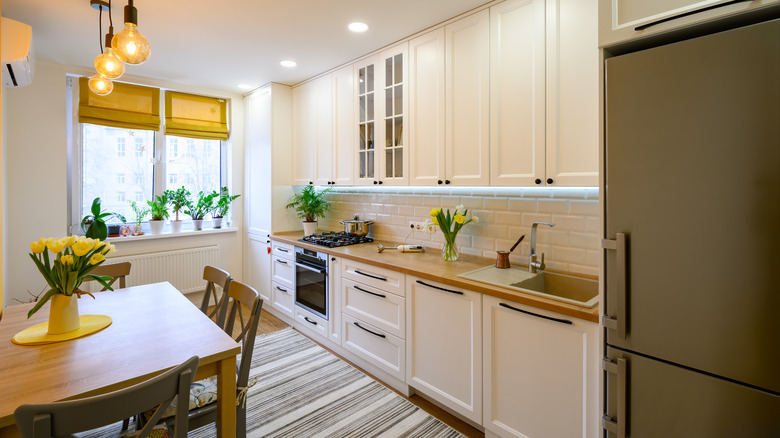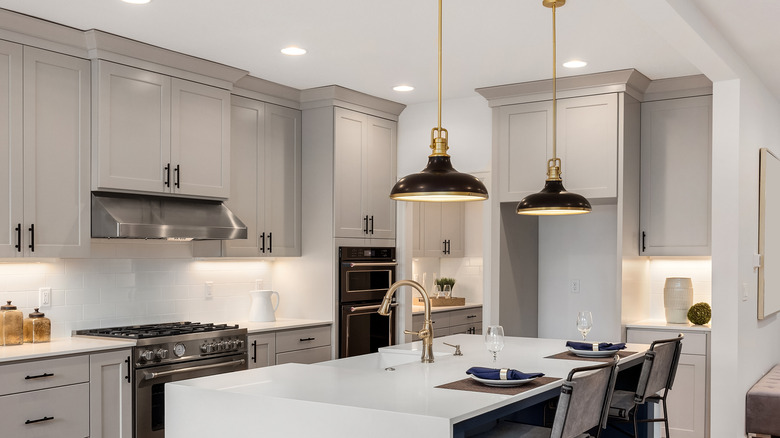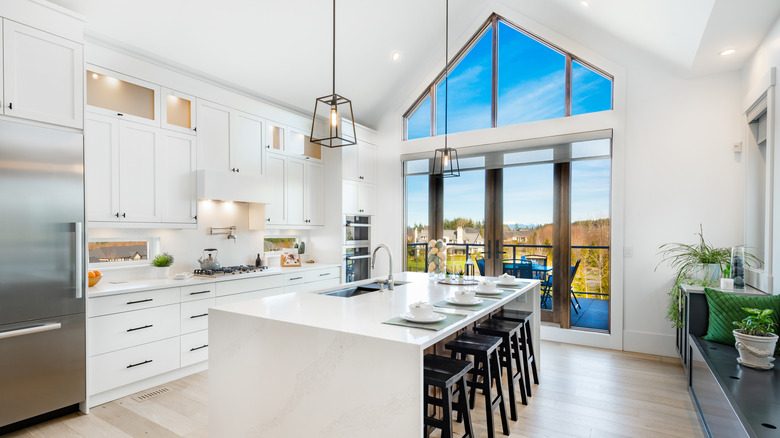Here's How Much Light Your Kitchen Really Needs
When it comes to your kitchen, having as much brightness as possible is the name of the game. While aesthetically pleasing, this is essential because there are so many tasks that get completed in this area. According to Kitchen Emporium, not only is the amount of lighting important, but so is the overall placement.
Indeed, the most obvious arrangement is overhead lighting. After all, this is the main source of illumination in your kitchen, as it expands throughout the whole area. Even if you have smaller lights scattered elsewhere, pendant lights, recessed lights, and chandeliers are important because they're often the centerpiece of the room.
There's also the option of using accent lighting. Typically, this style is either displayed for visual appeal or placed in areas where the overhead lighting is hard to reach. More often than not, it's used to create a focal point or design statement. Similar to accent lighting, a modern trend is placing lights under the cabinets, providing an optimum setting to prep and cook food. However, these too can be used for aesthetic purposes.
While it's clear you have many options for lighting, just how much luminescence should any bulbs be putting off? Let's find out.
The right amount of light
To get the perfect amount of lighting in your kitchen, there are many factors to consider. As Pooky states, this varies from kitchen to kitchen. However, generally, this space will need around 70 to 80 units of light per square foot. For perspective, calculate the overall width and length to determine the square footage. Then, multiply this amount by the number of lights you desire. Additionally, there's another method to calculate how bright your kitchen should be.
Throughout the United States, light intensity is measured in footcandles, with 1 footcandle equating to 1 lumen or watt (via Advanced Controls & Distribution). Depending on the exact area in the kitchen, these unit sizes can vary drastically, but the general consensus is about 5 footcandles, which equates to roughly 54 lumens. Meantime, the kitchen counters should contain roughly 50 footcandles, which breaks down to 538 lumens. Finally, both the sink and cooking areas should each contain 30 footcandles, or 323 lumens.
Other ways to brighten up your kitchen
While electricity is certainly the most common and convenient way to light up a kitchen, there are a few natural options as well. Per Singer Kitchen, position mirrors to provide some reflection. For traditionally designed kitchens, you can display an oversized mirror on a bare wall. This will enhance the space to its fullest and allow the light to reflect over the entire room. If you have a retro-inspired kitchen or something more personalized, shop at thrift stores or antique shops to find uniquely designed mirrors. This way, you'll illuminate your kitchen while simultaneously enhancing it.
Of course, the most natural method is sunlight, and you can achieve this by opening any blinds or curtains or removing them completely. If privacy is a concern, you can install sheer curtains, which will still allow for natural light to flow. Alternatively, Campbell Window Film suggests installing one-way mirrors or film coverings. However, if you install them, you'll likely need some curtains for privacy; after all, you don't want neighbors or strangers to see in.


